Cesarean birth, also termed cesarean section, is the delivery of a neonate by surgical incision through the abdomen and uterus. The term cesarean birth is used in nursing literature rather than cesarean delivery to accentuate that it is a process of birth rather than a surgical procedure. This method may occur under planned, unplanned, or emergency conditions. Indications for cesarean birth may include abnormal labor, cephalopelvic disproportion, gestational hypertension or diabetes mellitus, active maternal herpes virus infection, fetal compromise, placenta previa, or abruptio placentae.
Nursing Care Plans and Management
The nursing care plan for patients undergoing a Cesarean birth involves monitoring vital signs, incision site, and post-operative pain, providing education on incision care and postpartum recovery, and assisting with early ambulation and mobilization. Nursing management includes providing pain relief measures, promoting deep breathing and coughing exercises to prevent complications, administering prescribed medications, assessing and managing incision site complications, and providing emotional support and guidance throughout the recovery process.
Nursing Problem Priorities
The following are the nursing priorities for patients undergoing a Cesarean birth:
- Pain management and comfort
- Incision site assessment and care
- Monitor vital signs and post-operative complications
- Promotion of breastfeeding and bonding
- Education on postpartum recovery and self-care
- Assistance with early ambulation and mobilization
- Emotional support and guidance
Nursing Assessment
Assess for the following subjective and objective data:
- Incision site pain or discomfort
- Swelling, redness, or discharge at the incision site
- Post-operative bleeding or unusual vaginal discharge
- Difficulty or pain while moving or walking
- Fatigue or exhaustion
- Breast engorgement or difficulty with breastfeeding
- Emotional changes such as mood swings or baby blues
- Incision site infection or wound complications (less common but possible)
Nursing Diagnosis
Following a thorough assessment, a nursing diagnosis is formulated to specifically address the challenges associated with cesarean birth based on the nurse’s clinical judgment and understanding of the patient’s unique health condition. While nursing diagnoses serve as a framework for organizing care, their usefulness may vary in different clinical situations. In real-life clinical settings, it is important to note that the use of specific nursing diagnostic labels may not be as prominent or commonly utilized as other components of the care plan. It is ultimately the nurse’s clinical expertise and judgment that shape the care plan to meet the unique needs of each patient, prioritizing their health concerns and priorities.
Nursing Goals
Goals and expected outcomes may include:
- The client will verbalize understanding of indications for cesarean birth and postoperative expectations.
- The client will state that they feel well prepared for cesarean birth.
- The client will recognize this as an alternative childbirth procedure to achieve the best result possible in the end.
- The client will perform or participate in necessary procedures appropriately to understand the rationale behind the actions.
- The client verbalizes reduced discomfort or pain.
- The client appears relaxed, can rest or sleep, and participates appropriately.
- The client verbalizes methods that provide relief.
- The client demonstrates relaxation skills and diversional activities as indicated for the situation.
- The client is afebrile (temperature below 38℃/100.4℉) and free of purulent drainage or erythema of the surgical site.
- The client achieves timely wound healing without complications.
- The client’s amniotic fluid remains clear with a mild odor.
- The client remains normotensive, with fewer than 800 ml blood loss.
- The client has scant to no bleeding on the surgical dressing.
- The client’s urine-specific gravity remains between 1.003 and 1.030.
- The client’s weight loss is not more than 5 to 10 lbs (11 to 22 kgs).
- The client displays optimal FHR.
- The client manifests normal variability on the monitor strip.
- The client reduces the frequency of late or prolonged variable decelerations.
- The mother is free of injury.
- The client and her partner discuss feelings about cesarean birth.
- The client appears relaxed and comfortable.
- The client and her partner will verbalize fears for the safety of herself and the infant.
- The client and her partner will express decreased anxiety after explaining cesarean birth.
- The client will identify and discusses negative feelings.
- The client will verbalize confidence in herself and her abilities.
- The client will identify coping strategies for the present situation.
- The client will verbalize fears and feelings of vulnerability.
- The client will express individual needs and desires.
- The client will participate in the decision-making process whenever possible.
- The client will participate in the development of goals and care plans.
- The client will demonstrate behaviors necessary to incorporate a therapeutic regimen in daily life.
- The client will participate in the decision-making process about the infant.
- The client will demonstrate techniques to enhance the care of the infant.
- The client will display a desire to strengthen her parenting skills.
Nursing Interventions and Actions
Therapeutic interventions and nursing actions for patients undergoing a cesarean birth may include:
1. Initiating Patient Education and Health Teachings
Cesarean section (CS) is one of the most common major surgical procedures worldwide. Despite being a vital obstetric procedure that saves the lives of women and infants, it is not free of short and long-term adverse events for both. Childbearing women themselves, their relatives, and society might prefer delivery by a CS due to a lack of general knowledge about the advantages of vaginal delivery, fear from pain, widespread misconceptions about urinary and sexual functions after vaginal delivery, and the misbelief that a CS is safer for the baby (Wali et al., 2020).
Assess the client’s or couple’s level of understanding.
Determining the level of understanding facilitates the planning of preoperative teaching and identifies content needs.
Appraise knowledge toward the procedure.
Most clients fail to retain the information instilled during childbirth classes. Therefore, clients have difficulty remembering or understanding the details during the entire process.
Assess the level of stress and whether the procedure was planned or not.
Defines the client’s or couple’s readiness to incorporate information. Clients who are extremely worried about surgery may need a detailed explanation of the procedure to reduce their anxiety to a tolerable level.
Provide accurate information in easy-to-understand terms and clarify misconceptions.
The stress of the situation can affect the client’s ability to understand the information required to make informed decisions. They may not process the new information if they do not understand the terminology.
Encourage the couple to ask questions and verbalize their understanding of the matter.
Provides an opportunity to assess and evaluate the client’s or couple’s understanding of the situation. Answer all specific questions that the couple has and fill in gaps in knowledge as necessary. Be certain that all information that you offer is correct.
Review indications necessitating alternative birth methods.
Cesarean birth should be viewed as an alternative and not an abnormal situation to enhance maternal and fetal safety and well-being.
Explain preoperative procedures in advance and present rationale as appropriate.
Explanation of the logical reasons why a particular choice was made is vital in preparation for the procedure. Immediate preoperative procedures such as surgical skin preparation, eating nothing before the time of surgery, premedications, and method of transport to surgery should be clearly explained by the nurse.
Review the necessity for postoperative measures.
Educate the client about the rationale behind necessary postoperative measures such as indwelling bladder catheter, IV fluid administration, and placement of an epidural catheter for post-procedure pain relief (if preferred by the client). Knowing the rationale behind the procedures may allow the client to feel a sense of control over her situation.
Educate the client preoperatively and reinforce learning postoperatively, including demonstration of leg exercises, proper coughing, deep breathing techniques, incentive spirometry, splinting, and abdominal tightening exercises.
Provides routine to prevent complications associated with venous stasis and hypostatic pneumonia and lessen stress on the operative site. Abdominal tightening reduces distress associated with gas formation and abdominal distension. Periodic deep breathing exercises fully aerate the lungs and help prevent stasis of lung secretions. Preoperative education can help reduce anxiety about the procedure and clients are more likely to comprehend what is being taught.
Stress anticipated sensations further during the delivery and recovery period.
Knowing the possible outcomes helps prevent unnecessary anxiety. Preoperative teaching aims to acquaint the client with the cesarean procedure and any special equipment used.
Use visual aids during teaching if necessary.
Draw pictures or show illustrations of anatomy, as needed. These materials could enhance the client’s learning experience and make it easier to understand and recall the teachings fully. See the resources section below for a list of teaching aids you can use.
Discuss and develop a postoperative pain management plan and review the use of the pain scale.
Developing a pain management plan with the client increases the likelihood of successful pain management. Some clients may expect that cesarean birth produces less pain than a vaginal birth or fear becoming addicted to opioid agents (Wali et al., 2020).
Note the presence of maternal factors that negatively affect placental circulation and fetal oxygenation.
Decreased circulating volume or vasospasms within the placenta decrease oxygen available for fetal uptake. Vasospasm in gestational hypertension impedes blood flow to the mother’s organs and placenta, reducing maternal blood flow and nutrition flow and decreasing available oxygen to the fetus.
Document fetal heart rate (FHR), note any changes or decelerations during and following contractions.
Owing to hypoxia, fetal distress may transpire; may be displayed by reduced variability, late decelerations, and tachycardia followed by bradycardia. Late decelerations suggest that the placenta is not delivering enough oxygen to the fetus. Infection from prolonged rupture of membranes also increases FHR (Ghi et al., 2020).
Examine color and amount of amniotic fluid when membranes rupture.
Fetal distress in vertex presentation is manifested by meconium staining, resulting from a vagal response to hypoxia. Meconium staining is a common complication during labor and is a common cause for cesarean birth as shown by 5% to 25% of meconium-stained amniotic fluid cesarean deliveries (Hasan et al., 2021; Fernandez et al., 2018).
Document the presence of variable decelerations; change client’s position from side to side.
Variable decelerations suggest that there is inadequate amniotic fluid to cushion the cord or it is being compressed. Compression of the cord between the birth canal and presenting part may be relieved by position changes. The woman should be turned to her left side to relieve pressure on the umbilical cord and improve blood flow through it.
Auscultate FHR when membranes rupture.
In the absence of full cervical dilation, occult or visible prolapse of the umbilical cord may necessitate cesarean birth. Rates outside the normal range of 110 to 160 beats/minute for a term fetus suggest a prolapsed umbilical cord after an amniotomy was performed.
Monitor fetal heart response to preoperative medications or regional anesthesia.
Following delivery, narcotics normally reduce FHR variability and necessitate naloxone (Narcan) administration to reverse narcotic-induced respiratory depression. Maternal hypotension results from local anesthetic blockade of the sympathetic nervous system leading to vasodilation. Because uterine blood flow is not autoregulated, a decrease in maternal blood pressure decreases uteroplacental perfusion. Fetal bradycardia occurs within 15 to 45 minutes after initiation of both epidural and combined spinal-epidural (CSE) anesthesia (Galante, 2010).
Apply internal lead, and monitor fetus electronically as indicated.
Gives more precise measurements of fetal response and condition. Continuous electronic fetal monitoring (EFM) allows the nurse to collect more data about the fetus, which is why it is used commonly in most hospitals. FHR and uterine contraction patterns are continuously recorded.
Administer supplemental oxygen to mother via mask.
Maximizes oxygen available for placental uptake. Administer 10L/min for 30 minutes to increase fetal oxygenation. Oxygen administration has also been used prophylactically in the second stage of labor on the assumption that this is a time of high risk for fetal distress (Fawole & Hofmeyr, 2012).
Administer IV fluid bolus before initiation of epidural or spinal anesthesia.
Optimizes uteroplacental perfusion helps prevent a hypotensive response. Administer saline solution to improve cardiac output, circulatory volume, and uteroplacental perfusion. However, the nurse should observe for fluid volume overload and pulmonary edema.
Implement amniotransfusion, as indicated.
Amniotransfusion involves instilling a saline infusion by catheter into the uterine cavity to restore amniotic fluid volume to relieve umbilical cord compression that can interrupt fetal oxygenation.
Assist the healthcare provider with the elevation of the vertex, if required.
Position changes may reduce pressure on the cord. Manual elevation of the fetal presenting part using two fingers or the whole hand through the vagina can be done, as well as positioning the client into a steep Trendelenburg position, exaggerated Sim’s position or knee-chest position to relieve cord compression until cesarean birth is performed (Ahmed & Hamdy, 2018).
Implement measures to reduce uterine activity, as prescribed.
Excess uterine activity (tachysystole) is more than five contractions in 10 minutes, averaged over 30 minutes (the normal is five contractions or fewer in 10 minutes). Discontinuing oxytocin or administering tocolytics that decrease the healthcare provider may prescribe uterine activity.
Administer tocolytic drugs as prescribed by the healthcare provider.
See Pharmacologic Management
Plan the presence of a pediatrician and neonatal intensive care nurse in the delivery room for both scheduled and emergency cesarean births.
Due to underlying maternal conditions and alternative birth, the neonate may be preterm or experience altered responses, necessitating immediate care or resuscitation.
2. Managing Acute Pain
The experience of pain during childbirth is complex and subjective. Several factors can affect the client’s perception of labor pain, making each experience unique. Consistently, pain during childbirth is ranked high on the pain rating scale compared to other painful life experiences (Labor & Maguire, 2008). Cesarean birth is among surgery procedures that induce pain, and surgery threatens the body’s integrity. Increased serum catecholamines and cortisol may lead to decreased pelvic blood flow and increased pain during labor while disrupting normal labor and delivery, prolonged deliveries, emergency cesarean birth, medical and surgical interventions, and increased dissatisfaction with childbirth experiences (Ahmadi, 2020).
Assess location, characteristics, frequency, severity, and onset/duration of pain, especially related to the indication for cesarean birth.
Data can help indicate the suitable choice of treatment and guide interventions. The client awaiting imminent cesarean birth may encounter varying degrees of discomfort, depending on the indication for the procedure, e.g., failed induction, dystocia. A study determined that the reasons for performing cesarean birth were the above-normal baby’s weight, fetal distress, dystocia, placenta previa, placenta abruption, decreased fetal percentage, and malposition (Solehati & Rustina, 2015).
Assess the client’s perceptions, along with behavioral and physiological responses.
Research shows that experiencing pain during labor and early puerperium is higher in women after a cesarean birth. However, many clients opt to deliver via cesarean for fear of pain (Ilska et al., 2020). According to research conducted in Iran, over 70% of pregnant women demand cesarean without medical necessity, 92% of which are due to fear of labor pain and normal delivery complications. Correcting false client perceptions may help them prepare adequately in dealing with childbirth pain.
Note the client’s attitude toward pain and use of specific pain medications.
Fear of labor pain is the most common fear of childbirth (Ahmadi, 2020). According to previous studies, fear of pain increases the amount of pain and stress during labor. Additionally, the pain intensity is influenced by cultural factors. Culture has a role in pain tolerance and psychological perception of pain (Solehati & Rustina, 2015). Some clients may avoid pharmacological pain relief because of cultural and religious beliefs.
Educate the patients about the effects of regional and general anesthesia.
See Pharmacologic Management
During labor and delivery
Perform pain assessment every time the client reports pain.
Note, compare, and investigate changes from previous reports to identify labor progress or rule out worsening of the client’s condition or development of complications. Always rate the client’s pain using a rating scale and identify its characteristics (frequency, duration, severity, intervals).
Monitor the client’s vital signs.
Note for signs of tachycardia, hypertension, and increased respirations. Changes in these vital signs often indicate acute pain and discomfort.
Observe nonverbal cues of pain, especially in clients who cannot communicate.
The nurse’s observations may not always be congruent with verbal reports indicating the need for further evaluation, especially in clients who cannot communicate verbally or clients who strictly adhere to their birth plan, which strictly prohibits the use of pharmacologic agents for pain relief. Nevertheless, these women should be assured that pain relief is available at any time during labor.
Avoid anxiety-producing circumstances (e.g., loss of control) and encourage the presence of a partner.
Levels of pain tolerance are individual and are affected by various factors. Extreme anxiety following an emergency may develop discomfort due to fear, tension, and pain affecting the client’s ability to cope. Providing social and professional support to the client creates comfort and reassurance and reduces pain (Ahmadi, 2020).
Encourage the client to verbalize feelings about pain.
Allow the client to verbalize her perceptions about pain and acknowledge the pain experience. Pain is a subjective experience and cannot be felt by others. Convey acceptance of the client’s response to pain.
Teach and demonstrate proper relaxation techniques—position for comfort as possible. Use therapeutic touch, as appropriate.
Relaxation techniques such as deep breathing exercises, music therapy, massages, etc., can help decrease anxiety and tension, promote comfort, and enhance a sense of well-being. Excessive fear and worry increase the release of catecholamines such as adrenaline and potentiate painkiller stimuli, increase the perception of pain in the cerebral cortex and decrease pain tolerance (Ahmadi, 2020).
Review client’s knowledge of and expectations about pain management and previous experiences with pain and methods used.
Antenatal childbirth preparation has a role in increasing maternal satisfaction and may reduce pain scores. Antenatal education is also essential when obtaining consent from the client; the aim is to provide good information to facilitate mothers to form realistic expectations about pain management during childbirth (Labor & Maguire, 2008).
Postpartum care and interventions
Encourage adequate rest periods after cesarean birth.
The period after cesarean birth includes recovery from surgery and adapting to motherhood. The client needs to rest adequately to prevent fatigue and recover appropriately before assuming the new role of being a mother. Parents may appreciate early discharge, as it provides the family, including older siblings, an opportunity to be together in the home environment (Kruse et al., 2020). Additionally, it provides adequate social and moral support for the woman.
Discuss with family ways to assist the client and reduce the pain.
Emotional and psychological support provided by the family can help in recovery and reduce postpartum pain.
If indicated, administer sedatives, narcotics, or preoperative drugs.
See Pharmacologic Management
Assess location, characteristics, frequency, severity, and onset/duration of pain, especially related to the indication for cesarean birth.
Data can help indicate the suitable choice of treatment and guide interventions. The client awaiting imminent cesarean birth may encounter varying degrees of discomfort, depending on the indication for the procedure, e.g., failed induction, dystocia. A study determined that the reasons for performing cesarean birth were the above-normal baby’s weight, fetal distress, dystocia, placenta previa, placenta abruption, decreased fetal percentage, and malposition (Solehati & Rustina, 2015).
Assess the client’s perceptions, along with behavioral and physiological responses.
Research shows that experiencing pain during labor and early puerperium is higher in women after a cesarean birth. However, many clients opt to deliver via cesarean for fear of pain (Ilska et al., 2020). According to research conducted in Iran, over 70% of pregnant women demand cesarean without medical necessity, 92% of which are due to fear of labor pain and normal delivery complications. Correcting false client perceptions may help them prepare adequately in dealing with childbirth pain.
Note the client’s attitude toward pain and use of specific pain medications.
Fear of labor pain is the most common fear of childbirth (Ahmadi, 2020). According to previous studies, fear of pain increases the amount of pain and stress during labor. Additionally, the pain intensity is influenced by cultural factors. Culture has a role in pain tolerance and psychological perception of pain (Solehati & Rustina, 2015). Some clients may avoid pharmacological pain relief because of cultural and religious beliefs.
Educate the patients about the effects of regional and general anesthesia.
See Pharmacologic Management
During labor and delivery
Perform pain assessment every time the client reports pain.
Note, compare, and investigate changes from previous reports to identify labor progress or rule out worsening of the client’s condition or development of complications. Always rate the client’s pain using a rating scale and identify its characteristics (frequency, duration, severity, intervals).
Monitor the client’s vital signs.
Note for signs of tachycardia, hypertension, and increased respirations. Changes in these vital signs often indicate acute pain and discomfort.
Observe nonverbal cues of pain, especially in clients who cannot communicate.
The nurse’s observations may not always be congruent with verbal reports indicating the need for further evaluation, especially in clients who cannot communicate verbally or clients who strictly adhere to their birth plan, which strictly prohibits the use of pharmacologic agents for pain relief. Nevertheless, these women should be assured that pain relief is available at any time during labor.
Avoid anxiety-producing circumstances (e.g., loss of control) and encourage the presence of a partner.
Levels of pain tolerance are individual and are affected by various factors. Extreme anxiety following an emergency may develop discomfort due to fear, tension, and pain affecting the client’s ability to cope. Providing social and professional support to the client creates comfort and reassurance and reduces pain (Ahmadi, 2020).
Encourage the client to verbalize feelings about pain.
Allow the client to verbalize her perceptions about pain and acknowledge the pain experience. Pain is a subjective experience and cannot be felt by others. Convey acceptance of the client’s response to pain.
Teach and demonstrate proper relaxation techniques—position for comfort as possible. Use therapeutic touch, as appropriate.
Relaxation techniques such as deep breathing exercises, music therapy, massages, etc., can help decrease anxiety and tension, promote comfort, and enhance a sense of well-being. Excessive fear and worry increase the release of catecholamines such as adrenaline and potentiate painkiller stimuli, increase the perception of pain in the cerebral cortex and decrease pain tolerance (Ahmadi, 2020).
Review client’s knowledge of and expectations about pain management and previous experiences with pain and methods used.
Antenatal childbirth preparation has a role in increasing maternal satisfaction and may reduce pain scores. Antenatal education is also essential when obtaining consent from the client; the aim is to provide good information to facilitate mothers to form realistic expectations about pain management during childbirth (Labor & Maguire, 2008).
Postpartum care and interventions
Encourage adequate rest periods after cesarean birth.
The period after cesarean birth includes recovery from surgery and adapting to motherhood. The client needs to rest adequately to prevent fatigue and recover appropriately before assuming the new role of being a mother. Parents may appreciate early discharge, as it provides the family, including older siblings, an opportunity to be together in the home environment (Kruse et al., 2020). Additionally, it provides adequate social and moral support for the woman.
Discuss with family ways to assist the client and reduce the pain.
Emotional and psychological support provided by the family can help in recovery and reduce postpartum pain.
If indicated, administer sedatives, narcotics, or preoperative drugs.
See Pharmacologic Management
3. Preventing Infections
If the cesarean birth is performed hours after the membranes rupture, a woman’s risk for infection will be higher than if the membranes were still intact. Amniotic fluid helps protect the fetus from infectious agents due to its inherent antibacterial properties. After the rupture of membranes, the cervical canal becomes the usual pathway for cervical and vaginal flora, causing infections. Additionally, the skin also serves as the primary line of defense against bacterial invasion, so when the skin is incised for a surgical procedure, this important line of defense is lost.
Assess history for preexisting conditions or risk factors. Note time of rupture of membranes.
Persons with a history of diabetes or hemorrhage have increased chances of infection and poor healing. The risk of chorioamnionitis increases while the pregnancy progresses, which may increase fetal risk contamination.
Assess the client’s vital signs for signs and symptoms of infection.
Rupture of membranes occurring 24 hours before the surgery may result in chorioamnionitis before surgical intervention and impair wound healing. An elevated temperature of at least 39℃ (102.2℉) or between 38℃ (100.4℉) and 39℃ (102.2℉) within 30 minutes and one of the clinical symptoms are signs of clinical chorioamnionitis. Chorioamnionitis presents as a febrile illness associated with an elevated WBC count, uterine tenderness, abdominal pain, foul-smelling vaginal discharge, and fetal and maternal tachycardia (Fowler & Simon, 2021).
Assess fetal heart rates regularly.
Fetal tachycardia (rate >160 beats per minute) may be the first sign of infection. Poor fetal oxygenation may also occur, especially with abnormal labor (Leifer, 2018). In the presence of fetoplacental infection or inflammation, the production of cytokines and other inflammatory mediators leads to an increase of the FHR baseline secondary to a dysregulation of the thermoregulatory center and the increased metabolic rate (Ghi et al., 2020).
Assess amniotic fluid drainage for color, clarity, and odor.
Cloudy, yellow, or foul-smelling amniotic fluid suggests infection, and meconium (green) staining suggests fetal compromise but is also seen with prolonged pregnancy.
Observe for localized signs of infection at the surgical incision site.
Surgical site infection (SSI) occurs in up to 11% of women after cesarean birth and is manifested as wound infection, endometritis, or urinary tract infection. The Centers for Disease Control and Prevention (CDC) defined SSI as an infection occurring 30 days after the operative procedure. However, they may appear after discharge and are managed, outpatient. The skin and subcutaneous tissue may have purulent drainage, a positive culture, complaints of pain or tenderness, or evidence of swelling, redness, or heat (Burke & Allen, 2020).
Provide perineal care per protocol, particularly once membranes have ruptured.
Decreases risk of ascending infection. Assist the client in maintaining good perineal hygiene by wiping from front to back. Good hygiene reduces the possibility of introducing bacteria into the birth canal. Vaginal cleansing with a 10% solution of povidone-iodine swab stick for 30 seconds should be considered for women in labor, especially those with ruptured membranes (Burke & Allen, 2020).
Strictly adhere to preoperative skin preparation; scrub according to protocol.
Decreases risk of skin contaminants entering the operative site, reducing the risk of preoperative infection. High-quality studies found that betadine and chlorhexidine as skin antisepsis preparation are sufficient and optimal when the solution is allowed to dry, per the manufacturer’s instructions (Burke & Allen, 2020).
Record hemoglobin and hematocrit and estimated blood loss during the surgical procedure.
The risk of post-delivery infection and poor healing increases if hemoglobin levels are low and blood loss is excessive. Compared with vaginal birth, women having a cesarean birth, especially a repeat cesarean, incur the highest risk for postpartum hemorrhage (PPH) (Burke & Allen, 2020). Excessive blood loss reduces immunity and leads to a lowering of hemoglobin concentration, which increases the risk of infection by negatively affecting macrophage activity and impeding wound healing (Abdelraheim et al., 2019). Greater blood loss is associated with classic incision than lower uterine segment incision.
Stress proper handwashing techniques by all caregivers between therapies/clients.
Hand hygiene is the single most effective way to prevent infections. The World Health Organization (WHO) and the CDC recommend hand hygiene as the first, simplest, and most cost-effective technique for infection control. Healthcare providers, clients, and their family members in the healthcare setting need to closely adhere to hand hygiene guidelines to prevent and minimize nosocomial infections (Damanabad et al., 2021).
Maintain sterile techniques for invasive procedures.
Using a sterile technique on invasive procedures (e.g., IV start, urinary catheterization, etc.) reduces the microbial count and creates a sterile field that helps prevent infections. Breaks in the technique can lead to infections in the client, leading to higher healthcare costs and severe complications (Tennant & Rivers, 2021).
Encourage early ambulation after cesarean birth.
Early mobilization is often part of a surgical bundle “fast track” or “enhanced recovery after surgery” (ERAS). It is recommended to improve many short-term outcomes after surgery, including a rapid return of bowel function and decreased length of hospital stay, thereby reducing the risk for infection (Macones et al., 2019).
Instruct client and family about techniques to protect the skin’s integrity and prevent the spread of infection.
Surgical site infections occur in approximately 10% of clients, >80% of which develop after discharge, which indicates a need for the client and their family to be provided with comprehensive information on the normal discharge course, signs and symptoms of infection, activity restrictions, and instructions on when to seek medical attention (Macones et al., 2019). Symptoms to watch out for that may indicate SSI are fever, pain, tenderness, purulent drainage of abscess on the incision site, and evidence of swelling, redness, or heat (Burke & Allen, 2020).
Emphasize the necessity of taking antibiotics as directed and using “leftover” drugs.
Premature discontinuation of treatment when the client feels well may yield reinfection and antibiotic resistance. The major contributors to resistance development include clinical misuse, self-medication, ease of availability of antibiotics, and poor hospital-based antibiotic use regulation in both developing and developed countries (Chokshi et al., 2019).
Administer parenteral, intravenous antibiotics within 60 minutes before cesarean birth skin incision, as indicated.
See Pharmacologic Management
Obtain blood, vaginal, and placental cultures, as indicated.
Evaluate the results of blood and wound cultures before the initiation of antibiotics to help determine the infecting organisms and degree of involvement. Laboratory findings typical of infection include leukocytosis with neutrophilia, a left shift, and lactic acidosis. However, no postpartum infection can be excluded based on lab work alone (Boushra & Rahman, 2021).
4. Preventing Hypovolemia and Hemorrhage
hemorrhage-vaginally-from-a-noncontracted-uterus-but-also-internally-from-blood-vessels-not-yet-securely-closed”>During a Cesarean birth, blood loss is a normal occurrence as the uterus is highly vascularized. However, excessive blood loss or postpartum hemorrhage can occur, which is characterized by heavy or continuous bleeding. It is a serious complication that can lead to hypovolemic shock and requires prompt medical intervention, including uterine massage, administration of uterotonics, fluid replacement, and possible blood transfusion to stabilize the patient’s condition and prevent further complications.
Assess the client’s intake and output and document for at least 24 hours.
Keep an accurate intake and output record of the client to ensure an adequate fluid balance has been achieved. A full uterus can obstruct a full bladder and fetal head; therefore, encourage voiding every two (2) hours if possible or catheterize if the bladder is distended and the client cannot void.
Assess the client’s respirations, BP, and pulse before, during, and after surgery.
To detect the earliest signs of bleeding, monitor blood pressure, pulse, and respiratory rate approximately every 15 minutes for the first hour after surgery, every 30 minutes for the next 2 hours, every hour for the next 4 hours, or as specifically prescribed. A minimal but continued change in vital signs is as ominous a sign of hemorrhage as is a sudden alteration in these measurements.
Assess for signs indicative of possible hemorrhage.
Observe for signs of hemorrhage, which include falling blood pressure (more than 20 mmHg systolic), systolic blood pressure less than 80 mmHg, or a drop of 5 to 10 mmHg over several readings; a change in pulse rate greater than 110 beats/minute or less than 60 beats/minute; respirations more rapid and stressed from previous readings; and restlessness and a sense of thirst. Notify the healthcare provider of any changes in vital signs that may indicate hemorrhage.
Assess the client’s dressing on the incision site and check for excessive vaginal discharges.
Inspect the dressing over the client’s surgical incision for blood staining each time vital signs are assessed to document no incisional bleeding. Observe the perineal pad for lochia flow and palpate fundal height each time to document uterine contraction. Blood oozing vaginally or from a surgical wound can pool considerably under the client before being otherwise visible.
Assess the client’s fundal height and abdomen regularly.
A client who has had spinal or epidural anesthesia will not experience pain on uterine palpation until the anesthesia has worn off. Therefore, uterine palpation should not increase her pain. Palpate gently enough once the anesthesia has worn off to not cause increased pain but thoroughly enough to determine uterine consistency. Assess the remainder of the abdomen for softness. A hard, “guarded” abdomen is one of the first signs of peritonitis.
Note the shift in behavior or mental status and cyanosis of mucous membranes.
Oxygen deficits are manifested first by changes in mental status, later by cyanosis. The presentation may include altered cognitive and neuromuscular function in clients with severe fluid volume depletion. Altered mentation can be both a cause and a consequence of volume depletion (Asim et al., 2019).
Remove nail polish on fingernails and toes.
Removal of nail polish allows the nurse to visualize the nail beds for assessing circulatory status. During the capillary refill test, pressure is applied on the nail bed until it turns white. Then, the pressure is released, and the amount of time it takes for the blood to return is measured.
Place a towel or wedge under the client’s hip.
Placing a towel wedge shifts the uterus off of the inferior vena cava and increases venous return. Compression caused by obstruction of the inferior vena cava and aorta by the gravid uterus in a supine position may cause as much as a 50% decrease in cardiac output (Kim & Wang, 2015).
Encourage the client to increase fluid intake, as indicated.
Introduce oral fluid slowly (e.g., ice chips for the first hour, then sips of clear liquid such as ginger ale, Jell-O, tea, or flavored ice). Teach the client to continue to drink large quantities of fluid after they return home (at least 6 glasses daily) so they have adequate body fluid to make breastfeeding successful.
Administer supplemental oxygen via a mask, as indicated.
Oxygen administration increases the oxygen available for maternal and fetal uptake. Maintaining adequate uterine perfusion can optimize fetal oxygenation, prevent acidosis, deliver nutrients, and eliminate waste products from the uterine myometrium (Caughey et al., 2018).
Administer IV fluids with or without oxytocin, as indicated.
It is important to infuse IV fluids during cesarean birth at a monitored rate. Rapid infusion can lead to cardiac overload, while slow infusion can lead to inadequate circulatory compensation. Oxytocin may be added, as prescribed, to the first one or two liters of IV fluid after surgery to ensure firm uterine contraction. Oxytocin aids myometrium contraction and reduces blood loss from exposed endometrial blood vessels. Be aware that the client is prone to hemorrhage when the oxytocin is discontinued. This is the first time her uterus is asked to maintain contraction on its own, so monitor the client’s vital signs carefully.
Administer blood and blood products as indicated.
A strong recommendation on blood transfusion in postpartum hemorrhage is that the client receives RBCs as soon as possible in case of massive hemorrhage. Additionally, the early treatment of coagulopathy with fresh frozen plasma (FFP) and platelets determines maternal morbidity and mortality. Fibrinogen plasma level has been a good predictor of hemorrhage severity because it plays a critical role in maintaining and achieving hemostasis. Fibrinogen concentrates offer rapid restoration of the fibrinogen concentration with a small-volume infusion with minimal preparation time (Bonnet & Benhamou, 2016).
Administer tranexamic acid as prophylaxis, as prescribed.
See Pharmacologic Management
5. Promoting Safety and Preventing Injuries
After a Cesarean birth, patients may be at an increased risk of falls and injury due to the physical changes and recovery process. They may experience post-operative pain, limited mobility, and difficulty with activities of daily living, which can contribute to a higher risk of accidents. It is important to provide a safe environment, educate patients on proper body mechanics and movement techniques, encourage early mobilization, and implement fall prevention strategies to minimize the risk of injury and promote a safe recovery.
Assess and record the time of first bowel sounds auscultated after the surgery.
During surgery, the intestine can feel pressure, resulting in a paralytic ileus or halting of intestinal function with obstruction. Late-onset of bowel movements after cesarean birth with spinal anesthesia can cause discomfort to the mother and prolonged hospital stay (Akalpler & Okumus, 2018).
Assess the client’s voiding pattern, including frequency, output, appearance, and time of the first postoperative output.
An indwelling catheter will be inserted during cesarean delivery to reduce bladder injury and increase time to first voiding, leading to early catheter removal and reducing incidences of urinary tract infection (Macones et al., 2019). Additionally, after removing the catheter, the woman should void in 4 to 8 more hours. Assess for bladder refilling by palpation to determine urinary retention, which can be potentially dangerous because a full bladder may inhibit the uterus from contracting, increasing the risk for postpartum hemorrhage.
Assess the surgical incision every 8 hours for every nursing shift.
Surgical incisions heal by primary intention. The nurse should routinely assess the surgical incision to ensure that the wound edges are approximated, and there are no signs of infection such as erythema or purulent discharges.
Assess the client’s vital signs, especially the respiratory rate, every 15 minutes for the first 1 to 2 hours and then every 30 minutes for 1 hour according to hospital policy.
The nurse should closely monitor the client for depressed respiratory function, especially if general anesthesia has been administered. There is a greater potential for postoperative sedation with general anesthesia than regional anesthesia (Caughey et al., 2018).
Assess the client’s lower extremity reflexes to return sensation to the lower limbs.
The administration of spinal or epidural anesthesia during cesarean birth produces numbness to the lower extremities that should disappear after a few hours. To assess for return of sensation, the nurse may elicit the knee-jerk reflex or the Achilles reflex by striking the plantar surface of the foot with a reflex hammer while creating a 90-degree angle.
Remove prosthetic devices before surgery.
Before surgery, follow hospital protocols regarding removing jewelry, contact lenses, piercings, hair ornaments, acrylic nails, or nail polish. These accessories can become accidentally dislodged or damaged during surgery. Nail polish should be removed to allow healthcare providers to assess for a capillary refill during the procedure.
Monitor urine output following insertion of an indwelling catheter.
An indwelling catheter reduces bladder size and keeps the bladder away from the surgical field. Catheterization may prevent bladder injury and postoperative urinary retention. A distended bladder is also expected to interfere with exposure and complicate surgery (Li et al., 2010). Additionally, the physiologic stress of surgery or lack of blood flow to the kidneys due to decreased blood pressure can cause kidney failure. All reproductive tract surgery also puts the ureter flow at risk because the edema that collects in the surgical area can press on the ureters.
Obtain the urine specimen for routine analysis, protein, and specific gravity. Ensure that laboratory results are available before surgery is started.
Preoperative assessment procedures for the client may include circulatory and renal function tests, complete blood count, coagulation profile, serum electrolytes, and blood typing and crossmatching. Keep in mind that blood values need to be evaluated in light of the changes in pregnancy.
Ensure early, if not immediate, removal of indwelling catheter after cesarean birth.
Clients without indwelling catheters had a shorter mean ambulation time and length of hospital stay. Even though the urinary catheter was removed 12 hours after surgery, the incidence of urinary tract infection was still significantly higher. Additionally, there is a higher incidence of discomfort and increased time to first voiding in clients with indwelling catheters, according to a Cochrane review (Macones et al., 2019).
Encourage enhanced recovery after surgery (ERAS) sham feeding (chewing gum) as appropriate after cesarean birth.
Problems such as constipation, postoperative ileus, and abdominal distention may be seen as an effect of anesthesia after abdominal surgery. Sham postoperative feeding with chewing gum after abdominal surgery appeared to reduce the time to recover gastrointestinal function (Macones et al., 2019). Chewing gum activates the cephalic vagal reflex and stimulates the digestive cephalic phase by imitating eating (Akalpler & Okumus, 2018).
Encourage early mobilization after cesarean birth, as indicated.
Early mobilization can improve many short-term outcomes after surgery, including the rapid return of bowel function, reduced risk of thrombosis, and decreased length of stay (Macones et al., 2019).
Restrict oral intake up to 6 hours before surgery, as indicated.
The client may be encouraged to drink clear fluids until 2 hours before surgery. A light meal may be eaten up to 6 hours before surgery. The European Society of Anesthesiology Guideline recommended that adults are allowed clear fluid intake 2 hours before elective surgeries (including cesarean births), and solid food is prohibited for 6 hours (Wilson et al., 2018).
Encourage the use of compression stockings as ordered by the healthcare provider.
Pregnant and postpartum women are at an increased risk of venous thromboembolism due to decreased physical mobility after major abdominal surgery. Pneumatic compression stockings may be used to prevent thromboembolic disease in clients who underwent cesarean birth (Macones et al., 2019).
Administer ephedrine or phenylephrine and antiemetics to prevent nausea and vomiting, as prescribed.
See Pharmacologic Management
Administer IV fluids such as lactated Ringer’s solution before surgery.
IV fluids ensure that the client is fully hydrated and will not experience hypotension from epidural anesthesia administration. If possible, start a line at the client’s non-dominant hand using a large-size catheter or needle (18 or 20 gauge), so blood replacement therapy can be administered by the same line if needed. Learn more about IV fluids here.
Maintain specific instrument and sponge counts at critical times during closure, according to hospital protocol.
Guarantees that all equipment and sponges are accounted for and not accidentally left in the client’s body. Preventing retained surgical items requires using combined evidence-based strategies supported by nursing leaders who value safe, patient-centered care by increasing the staff members’ knowledge with an effective safety-sponge technology system (Grant et al., 2020).
Assist with positioning for anesthesia; support legs in postoperative transfer to stretcher. Document the client’s response during and after anesthesia.
The sitting and lateral decubitus positions are usually used for epidural anesthesia. The client with epidural or spinal anesthesia may acquire weakness or decreased sensation of lower extremities. Postdural puncture headache may occur after, which is a common complication associated with epidural and spinal anesthesia (Folino & Mahboobi, 2021).
6. Reducing Anxiety and Fear
After a Cesarean birth, some patients may experience feelings of no control, low self-esteem, and anxiety. This may stem from the perception of not having control over the birth process, the surgical intervention, and the recovery period. Moreover, changes in body image and self-perception may contribute to feelings of low self-esteem. Addressing these emotions through open communication, providing information and support, and involving the patient in decision-making can help alleviate these concerns and promote emotional well-being.
Assess psychological response to events and availability of support systems.
The greater the client perceives the threat, the greater her anxiety level. Women who are extremely worried about the cesarean birth may need a detailed explanation of the procedure to reduce their anxiety to a tolerable level.
Determine stress level and learning needs.
Provides a database to build on to provide information that will decrease anxiety. Overwhelming or persistent fears result in excessive stress reactions.
Consider cultural influences or expectations.
Some cultures (e.g., Latin, Mexican/Arab-American) may view surgical intervention as detrimental to the client’s well-being or may believe the client will be stigmatized as a “weak woman” (e.g., Puerto Rican). Women who have a cesarean birth might be stigmatized because they are seen as having avoided something difficult, the rite of passage into motherhood of going through hours of agonizing labor (Cripe, 2017).
Know whether the procedure is planned or not.
If the procedure is unplanned, the client or couple usually has limited physiological or psychological preparation time. Cesarean birth can still create apprehension even if planned due to the perceived physical threat to the mother and infant.
Note and validate expressions of fear, distress, or feelings of helplessness.
Validation helps the nurse and the client deal realistically with fear. Numerous fears surrounding childbirth have been reported, and these include fear of losing control, emergency cesarean birth, death or injury to themselves or the baby, inadequate support/care from care providers, not having a voice in decision making, pain, epidural anesthesia, episiotomies or perineal tears, and the unknown (Bryanton et al., 2021).
Remain with the client, and stay calm. Speak slowly and convey empathy.
Therapeutic communication helps to reduce interpersonal transmission anxiety and shows care for the client or couple. Studies, such as the Akbarzadeh et al., have proved that nurse companionship with the client positively reduces maternal anxiety during and after cesarean birth (Mostafayi et al., 2021).
Reinforce positive aspects of maternal and fetal condition.
It focuses on the likelihood of a desirable outcome and helps bring perceived or actual threats into perspective.
Let the client or couple verbalize their inner thoughts and feelings.
Helps to distinguish negative feelings and concerns and provides a chance to cope with uncertain or unresolved feelings of grief. The client may also feel emotional intimidation to her self-esteem, owing to her feelings that she has failed, that she is weak as a woman, and that her expectations have not been met. The partner may question their abilities in assisting the client and providing needed support.
Support or redirect expressed coping mechanisms.
Improves fundamental and automatic coping mechanisms, increases self-confidence and acceptance and reduces anxiety. Note: Some actions by the client may be viewed as ineffective (e.g., screaming and throwing things) and need to be redirected to enhance the client’s sense of control. Participants of a research study voiced that gaining control and developing a plan for their birth helped them cope with their fears (Bryanton et al., 2021).
Allow the client to discuss and elaborate past childbirth experiences or expectations, as appropriate.
The client may have twisted thoughts of past delivery or unrealistic perceptions of abnormality of cesarean birth that will increase anxiety.
Allot time for privacy.
Allows the client or couple to process information, organize resources, and cope effectively.
Guide the client through preoperative nursing care.
Familiarization with preoperative nursing care can significantly reduce the client’s anxiety, heart rate, respiratory rate, and blood pressure (Mostafayi et al., 2021).
Appraise circumstances contributing to a sense of powerlessness.
Powerlessness becomes a major stress factor for clients experiencing their first hospitalization, including fear of the unknown. Unplanned (and sometimes planned) cesarean birth may be characterized by the client’s or couple’s sense of loss of control over the birth experience (Burcher et al., 2016).
Identify the client’s strengths and past successful coping strategies.
Helps the client to recognize their ability to deal with a difficult situation. One of the most important strategies for coping with the fear of childbirth is the feeling of confidence. Maternal confidence can be derived from four important factors, according to a qualitative study by Ahmadi (2020): faith in God, receiving support, raising awareness, and positive thinking.
Encourage the client to consider options in care when possible (e.g., IV placement, choice of anesthesia, and use of the mirror).
Provide client opportunities to control as many events (e.g., choice of food, placement of IV cannula, choice of anesthesia type, etc.) as care restrictions may permit the client to have some sense of control over the situation.
Recognize client or couple’s expectations and desires concerning the delivery experience.
Provides an opportunity to accommodate needs and encourage a positive experience. Increasing awareness and preparation for childbirth is an important strategy for coping with the fear of childbirth. Well-prepared women have higher confidence which translates to reduced fear of losing control of the situation (Ahmadi, 2020).
Allot personal time and space for the couple before the surgery, if possible. Stay with the client if the partner is absent.
Provide an opportunity to let the couple talk about the situation through their means. Leaving the client alone may result in feelings of abandonment and adds anxiety. Providing ongoing emotional and psychological support to the mother creates comfort and reassurance and reduces fear and pain (Ahmadi, 2020).
Provide information, and talk about the client or couple’s perceptions.
Providing information diminishes stress brought by misconceptions and unfounded fear. By receiving correct information, well-prepared women for pregnancy and childbirth have greater expectations of actual pain levels and are less likely to experience inability and loss of control (Ahmadi, 2020).
Develop a care plan with the client specifying goals agreed on.
Enhances commitment to the plan and optimizing outcomes. Shared decision-making before and during labor and delivery is critical for developing and preserving a client-provider relationship characterized by trust, mutual respect, multidirectional communication, and shared power/control (Ahmadi, 2020).
Facilitate return to a productive role in whatever capacity possible for the client.
The extent of recovery following a cesarean birth varies among clients. For some women, emotional recovery is much more difficult than physical recovery. Difficulties with infant care, particularly breastfeeding, also influence the client’s productive role. The presence of support and social interaction can positively impact the client’s emotional and physical recovery. Education about infant care and breastfeeding also increases the client’s control of the situation and her new role as a mother (Puia, 2018).
Encourage the client to think productively and positively and take responsibility for their thoughts.
Having positive attitudes such as paying attention to positive aspects like becoming a mother and others’ positive experiences and using positive visualization such as imagining the pleasing results of childbirth and having beautiful perceptions about the moment of mother and child visit creates positive thinking. It ultimately reduces the fear of childbirth (Ahmadi, 2020).
7. Promoting Adherence to Therapeutic Regimen
The postpartum period is a difficult time, where new roles and responsibilities are assumed. During this period, the parents have to learn infant care, establish a safe environment for the infant, learn the new roles, and deal with the problems related to the infant. However, the postpartum period is also when the mother needs the most information, support, and qualitative care. Being discharged from the facility 24 hours after birth may be sufficient to prevent complications; however, it is not sufficient enough to support the mother to adapt to her new situation. Therefore, at such a critical period, the mother’s physical and mental health should be closely monitored after the discharge (Capik et al., 2015).
Assess the environment for factors causing sensory overload.
Cesarean birth can be tedious for the client, and she may not concentrate on the procedures being performed. Determine the factors that can be controlled and cannot be controlled.
Assess the extent of the client’s ability to move in bed and breastfeed.
Explain the importance of getting out of bed and caring for the neonate. Early ambulation helps prevent thrombophlebitis, and early breastfeeding helps establish an adequate milk supply.
Assess the client’s and partner’s ability to comprehend information, including literacy, level of education, and primary language.
This provides opportunities to clarify viewpoints or misconceptions. It also verifies that the client and her partner have accurate and factual information to make informed choices. The prenatal and postpartum periods are needed to prepare the woman and family adequately for recovery and parenting (Miovech et al., 2013).
Determine cultural, spiritual, and health beliefs and ethical concerns.
Identifying these factors provides insight into thoughts and factors related to individual situations. Beliefs will affect the client’s perception of the situation and participation in the therapeutic regimen. Interventions may be incongruent with the client’s social and cultural lifestyle and perceived role/responsibilities.
Provide the client information about the cesarean birth postpartum care.
Information about postpartum care and how to manage possible complications can help decrease anxiety and put perceived “chaos” in perspective. An unplanned, emergency cesarean delivery can be especially stressful, with its unfamiliar and intrusive procedures occurring in rapid succession, straining the ability of the mother to assimilate the experience (Miovech et al., 2013). Providing information helps prepare the women for a new life, decreases maternal morbidity during this period, and promotes recovery (Salam Ramadan & Farrag, 2018).
Explain the physiological process of the woman during the postpartum period.
Explanations about the process of returning to the nonpregnant state should be provided at this time by the nurse. Women need to learn that the discomfort associated with the healing incision may take months to resolve. The ability to move quickly and easily will return gradually. Methods to accomplish teaching can include pamphlets, videos in the postpartum unit, and postpartum follow-up calls (Miovech et al., 2013).
Listen to the client’s and partner’s reports and comments.
Listening actively conveys a message of concern and belief in the individual’s capabilities to resolve the situation positively. Each interaction with the postpartum woman should have specific teaching and learning goals because often the woman will be discharged according to externally applied criteria rather than personal readiness (Miovech et al., 2013).
Provide positive reinforcements for efforts.
Positive feedback encourages the continuation of the desired behaviors. Emphasize positive aspects of the situation, maintaining a positive attitude toward the client’s capabilities and potential for improvement. Helping the client to feel accepting about herself and her individual capabilities will promote growth and strengthening of her self-care skills.
Promote client and partner’s participation in the planning and evaluating process.
Discharge planning should include helping parents make arrangements for obtaining help from relatives and friends and spacing activities throughout the day to reduce fatigue. The management of one is not effective for the other, therefore, a correct evaluation is necessary so that the woman receives appropriate interventions (Miovech et al., 2013).
Develop a plan for self-monitoring with the client.
Share data pertinent to the client’s condition such as laboratory results or blood pressure readings. This provides a sense of control and enables the client to follow their own progress and make informed choices.
Assess the client’s or couple’s perception of the situation and note individual concerns.
Identifying individual factors will aid in focusing interventions and establishing a realistic care plan. When a cesarean birth is unscheduled, the client does not have much preoperative time to think about how she will feel after surgery. Most clients are surprised to realize how quickly they become fatigued and how painful a simple surgical incision can be. Identifying essential factors that can affect their parenting role should be done early to put forth interventions before discharge.
Determine cultural and religious influences on parenting expectations of self and infant.
This information is crucial to helping the family identify and develop a treatment plan that meets its specific needs. For example, Chinese parents rarely praise their children verbally, because their culture encourages modesty and humility. Chinese typically express their emotions in more subtle forms than Western people (Chung et al., 2018).
Assess the client’s or couple’s level of stress and discomfort.
A study demonstrated that an atmosphere full of stress and discomfort in high-risk pregnancies might reduce maternal attachment behaviors. Adaptations to changes in pregnancy in normal conditions were already considered a crisis, as well. In case of a health risk for the mother or the infant, conditions would be more difficult, requiring more flexibility and patience (Rookesh et al., 2021).
Assess parenting skill level, considering intellectual, emotional, and physical strengths and limitations.
This identifies areas of need for further education, skill training, and factors that might interfere with assimilating new information. If the parent’s behavior shows strong intent for interaction, it attracts the attention of infants and initiates mutual exchange, response, and participation (Chung et al., 2018).
Note the presence and effectiveness of extended family support systems.
Having a support system provides role models for parents to help them develop their parenting style. However, some role models may be negative and/or controlling. The history of parental evolution and the way parents have interacted with their own parents can also influence how they behave with their children in the future (Vafaeenejad et al., 2019).
Encourage the mother to breastfeed the infant.
Unless the infant was transferred to another unit, the nurse should provide the mother ample time to hold and breastfeed her infant. The average woman can breastfeed satisfactorily after a cesarean birth. However, caution the client that this may cause temporary uterine pain as the uterus contracts with breastfeeding, which could be beneficial in preventing postpartum hemorrhage. Intensive breastfeeding may facilitate increased maternal emotional care resulting in greater security attachment (Gibbs et al., 2018).
Involve the client in activities with the infant that they can accomplish successfully.
Participating in infant care enhances the client’s self-concept. Studies showed that mothers in a vaginal birth group are more motivated to take care of newborns and felt less tired than mothers in a cesarean birth group, who were more likely to fail in their efforts to care for their infants (Chen & Tan, 2019).
Encourage early skin-to-skin contact between mother and infant.
Research showed that mother-infant attachment status directly affected infants’ emotional, sentimental, and neonatal dimensions and behavioral problems. Results of a study indicated that the ratio of infants transferred to the Neonatal Intensive Care Unit (NICU) for examination after skin-to-skin contact immediately after cesarean birth was significantly different from the group with no mother-infant contact. These results support immediate, uninterrupted skin-to-skin contact for all mothers regardless of birth mode (Rookesh et al., 2021).
Recognize and provide positive feedback for nurturant and protective parenting behaviors.
Emphasize positive aspects of the situation, maintaining a positive attitude toward the parent’s capabilities and potential for improvement. This reinforces the continuation of desired behaviors. Helping the parents to feel accepting about themselves and individual capabilities will promote growth and strengthening of their skills.
Refer the client/couple to resources such as books, classes, and support groups.
The client should be able to develop support systems appropriate to their situation. Providing information and role models can help people learn to negotiate and develop skills for parenting and living together.
8. Administering Medications and Pharmacologic Support
Medications administered during a Cesarean birth primarily include anesthesia agents, such as general anesthesia or regional anesthesia (spinal or epidural). These medications are used to provide pain relief and numbness during the surgery. Tocolytics are medications used in some cases of Cesarean birth to inhibit uterine contractions and delay labor. Supportive medications, such as analgesics and antibiotics, may also be given to manage post-operative pain, prevent nausea and vomiting and prevent infections, respectively.
Tocolytic drugs
Tocolytics had been used to decrease the uterine contractions, relieve the pressure in the case of a prolapsed umbilical cord, and improve the placental perfusion and hence the blood supply to the fetus. However, the nurse should monitor uterine atony postpartum because tocolytics can cause uterine atony (Ahmed & Hamdy, 2018).
General anesthesia
General anesthesia induces a state of unconsciousness, allowing the mother to be completely unaware and asleep during the procedure. It is typically used when regional anesthesia is contraindicated or not preferred by the patient. General
Regional anesthesia
Regional anesthesia, specifically spinal or epidural anesthesia, is a common choice for Cesarean births. It allows the mother to remain awake and alert, providing the opportunity for the mother to participate in the birth experience and bond with her baby immediately after delivery.
Sedatives, narcotics, or preoperative drugs.
Promotes comfort by blocking pain impulses. Potentiates the action of anesthetic agents. Most women report pain and require opioid analgesia following cesarean birth—approximately 20% of women who undergo a cesarean birth experience severe acute postoperative pain. Individualized or stratified post-discharge opioid prescribing practices have been shown to reduce unnecessary opioid analgesic prescription and consumption, so they should be implemented routinely (Carvalho & Habib, 2019).
Antibiotics within 60 minutes before cesarean birth skin incision
A prophylactic antibiotic may be requested to prevent the development of an infectious process or as a treatment for an identified infection, especially if the client has had prolonged rupture of membranes. In all women, a first-generation cephalosporin is recommended; in women in labor or with ruptured membranes, the addition of azithromycin confers an additional reduction in postoperative infections (Caughey et al., 2018).
Ephedrine or phenylephrine and antiemetics
Nausea and vomiting are common symptoms experienced during a cesarean birth, and that happens during the surgery if the client is awake. Nausea and vomiting can increase the potential risk of aspiration, which is a recognized cause of maternal death. Maternal hypotension from regional anesthesia is a common cause of nausea and vomiting. A Cochrane review study revealed that the use of colloid or crystalloid preloading, intravenous administration of ephedrine or phenylephrine, and lower limb compression reduced the incidence of spinal anesthesia-related hypotension. Antiemetic agents also effectively prevent postoperative nausea and vomiting during cesarean birth (Macones et al., 2019).
Tranexamic acid as prophylaxis
Studies show that prophylactic use of tranexamic acid at cesarean birth had a biologic effect, in that calculated estimated blood loss was significantly lower among clients who received the drug than those who received placebo. Tranexamic acid has fibrinolytic effects that are achieved at least in part by promoting hemostasis, and it also reduces bleeding-related mortality among clients with postpartum hemorrhage. The survival benefit associated with the earlier administration of the drug suggests that it may prevent coagulopathy after delivery rather than treat it (Sentilhes et al., 2021).
Recommended Resources
Recommended nursing diagnosis and nursing care plan books and resources.
Disclosure: Included below are affiliate links from Amazon at no additional cost from you. We may earn a small commission from your purchase. For more information, check out our privacy policy.
Ackley and Ladwig’s Nursing Diagnosis Handbook: An Evidence-Based Guide to Planning Care
We love this book because of its evidence-based approach to nursing interventions. This care plan handbook uses an easy, three-step system to guide you through client assessment, nursing diagnosis, and care planning. Includes step-by-step instructions showing how to implement care and evaluate outcomes, and help you build skills in diagnostic reasoning and critical thinking.

Nursing Care Plans – Nursing Diagnosis & Intervention (10th Edition)
Includes over two hundred care plans that reflect the most recent evidence-based guidelines. New to this edition are ICNP diagnoses, care plans on LGBTQ health issues, and on electrolytes and acid-base balance.

Nurse’s Pocket Guide: Diagnoses, Prioritized Interventions, and Rationales
Quick-reference tool includes all you need to identify the correct diagnoses for efficient patient care planning. The sixteenth edition includes the most recent nursing diagnoses and interventions and an alphabetized listing of nursing diagnoses covering more than 400 disorders.

Nursing Diagnosis Manual: Planning, Individualizing, and Documenting Client Care
Identify interventions to plan, individualize, and document care for more than 800 diseases and disorders. Only in the Nursing Diagnosis Manual will you find for each diagnosis subjectively and objectively – sample clinical applications, prioritized action/interventions with rationales – a documentation section, and much more!

All-in-One Nursing Care Planning Resource – E-Book: Medical-Surgical, Pediatric, Maternity, and Psychiatric-Mental Health
Includes over 100 care plans for medical-surgical, maternity/OB, pediatrics, and psychiatric and mental health. Interprofessional “patient problems” focus familiarizes you with how to speak to patients.

See also
Other recommended site resources for this nursing care plan:
- Nursing Care Plans (NCP): Ultimate Guide and Database MUST READ!
Over 150+ nursing care plans for different diseases and conditions. Includes our easy-to-follow guide on how to create nursing care plans from scratch. - Nursing Diagnosis Guide and List: All You Need to Know to Master Diagnosing
Our comprehensive guide on how to create and write diagnostic labels. Includes detailed nursing care plan guides for common nursing diagnostic labels.
Other care plans related to the care of the pregnant mother and her baby:
- Abortion (Termination of Pregnancy) | 8 Care Plans
- Cervical Insufficiency (Premature Dilation of the Cervix) | 4 Care Plans
- Cesarean Birth | 11 Care Plans
- Cleft Palate and Cleft Lip | 7 Care Plans
- Gestational Diabetes Mellitus | 8 Care Plans
- Hyperbilirubinemia (Jaundice) | 4 Care Plans
- Labor Stages, Induced, Augmented, Dysfunctional, Precipitous Labor | 45 Care Plans
- Neonatal Sepsis | 8 Care Plans
- Perinatal Loss (Miscarriage, Stillbirth) | 6 Care Plans
- Placental Abruption | 4 Care Plans
- Placenta Previa | 4 Care Plans
- Postpartum Hemorrhage | 8 Care Plans
- Postpartum Thrombophlebitis | 5 Care Plans
- Prenatal Hemorrhage (Bleeding in Pregnancy) | 9 Care Plans
- Preeclampsia and Gestational Hypertension | 6 Care Plans
- Prenatal Infection | 5 Care Plans
- Preterm Labor | 7 Care Plans
- Puerperal & Postpartum Infections | 5 Care Plans
- Substance Abuse in Pregnancy | 9 Care Plans
Recommended Resources
- Cultural Birthing Practices and Experiences. An eBook that details the different cultural and ethnic practices during childbirth in Australia. A great resource if you want to expand your knowledge about these practices.
- Intrapartum Care for a Positive Childbirth Experience. A resource by the WHO that details what they recommend and what they don’t during intrapartum care. Check out the executive summary!
References and Sources
Recommended journals, books, and other interesting materials to help you learn more about cesarean birth nursing care plans and nursing diagnosis:
- Abdelraheim, A. R., Gomaa, K., Ibrahim, E. M., Mohammed, M. M., Khalifa, E. M., Youssef, A. M., Abdelhakeem, A. K., Hassan, H., Alghany, A. A., & Gelany, S. E. (2019, July 8). Intra-abdominal infection (IAI) following cesarean section: a retrospective study in a tertiary referral hospital in Egypt. BMC Pregnancy and Childbirth, 19(234).
- Ahmadi, Z. (2020, 03 20). Identifying and explaining experiences of fear of childbirth and coping strategies: A qualitative study. Journal of Qualitative Research in Health Sciences, 9(1), 47-58.
- Ahmed, W. A. S., & Hamdy, M. A. (2018, August 21). Optimal management of umbilical cord prolapse. International Journal of Women’s Health, 10, 459-465.
- Akalpler, O., & Okumus, H. (2018, Sept-Oct). Gum chewing and bowel function after Caesarean section under spinal anesthesia. Pakistan Journal of Medical Sciences, 34(5), 1242-1247.
- Asim, M., Alkadi, M. M., Asim, H., & Ghaffar, A. (2019, January 21). Dehydration and volume depletion: How to handle the misconceptions. World Journal of Nephrology, 8(1), 23-32.
- Bonnet, M. P., & Benhamou, D. (2016, June 27). Management of postpartum haemorrhage. NCBI. Retrieved January 12, 2022.
- Boushra, M., & Rahman, O. (2021, July 15). Postpartum Infection – StatPearls. NCBI. Retrieved January 9, 2022.
- Bryanton, J., Beck, C. T., & Morrison, S. (2021, April 22). When Fear Surrounding Childbirth Leads Women to Request a Planned Cesarean Birth. Western Journal of Nursing Research.
- Burke, C., & Allen, R. (2020, March/April). Complications of Cesarean Birth Clinical Recommendations for Prevention and Management. The American Journal of Maternal/Child Nursing, 45(2), 92-99.
- Carvalho, B., & Habib, A.S. (2019). Personalized analgesic management for cesarean delivery. International Journal of Obstetric Anesthesia, 40, 91-100.
- Caughey, A. B., Wood, S. L., Macones, G. A., Wrench, I. J., Huang, J., Norman, M., Pettersson, K., Fawcett, W. J., Shalabi, M. M., Metcalfe, A., Gramlich, L., Nelson, G., & Wilson, D. (2018, December). Guidelines for intraoperative care in cesarean delivery: Enhanced Recovery After Surgery Society Recommendations (Part 2). American Journal of Obstetrics and Gynecology, 219(6), 533-544.
- Chen, H., & Tan, D. (2019, February 21). Cesarean Section or Natural Childbirth? Cesarean Birth May Damage Your Health. Frontiers in Psychology, 10(351).
- Chokshi, A., Sifri, Z., Cennimo, D., & Horng, H. (2019, Jan-Mar). Global Contributors to Antibiotic Resistance. Journal of Global Infectious Diseases, 11(1), 36-42.
- Chung, F.-F., Wan, G.-H., Kuo, S.-C., Lin, K.-C., & Liu, H.-E. (2018, September 6). Mother-infant interaction quality and sense of parenting competence at six months postpartum for first-time mothers in Taiwan: a multiple time-series design. BMC Pregnancy and Childbirth, 18(365).
- Cripe, E. T. (2017, March 29). “The Scarlet C”: Exploring Caesarean Section Stigma. Health Communication, 33(6), 782-785.
- Damanabad, Z. H., Valizadeh, L., Hosseini, M., Abdolalipour, M., & Jafarabadi, M. A. (2021, July 23). Comparing the Effects of Face‑to‑Face and Video‑Based Educations on Hand Hygiene Knowledge and Performance among Mothers in Neonatal Intensive Care Unit: A Randomized Controlled Trial. Nursing and Midwifery Studies, 10(3), 158-164.
- Fawole, B., & Hofmeyr, G. (2012, December 12). Maternal oxygen administration for fetal distress. Cochrane Database of Systematic Reviews, (12).
- Fernández, V. R., y Cajal, C. N. L. R., Ortiz, E. M., & Naveira, E. C. (2018). Intrapartum and perinatal results associated with different degrees of staining of meconium-stained amniotic fluid. European Journal of Obstetrics & Gynecology and Reproductive Biology, 228, 65-70.
- Fowler, J. R., & Simon, L. V. (2021, September 8). Chorioamnionitis – StatPearls. NCBI. Retrieved January 9, 2022.
- Galante, D. (2010, March 10). Considerations on labor analgesia and drug complications. British Journal of Anaesthesia, 105(eLetters Supplement).
- Ghi, T., Pasquo, E. D., Dall’Asta, A., Commare, A., Melandri, E., Casciaro, A., Fieni, S., & Frusca, T. (2020, October 13). Intrapartum fetal heart rate between 150 and 160 bpm at or after 40 weeks and labor outcome. Acta Obstetricia et Gynecologica Scandinavica, 100(3), 548=554.
- Gibbs, B. G., Forste, R., & Lybbert, E. (2018, January 31). Breastfeeding, Parenting, and Infant Attachment Behaviors. Maternal and Child Health Journal, 22, 579-588.
- Grant, E. K., Gattamorta, K. A., & Foronda, C. L. (2020, March 21). Reducing the risk of unintended retained surgical sponges: A quality improvement project. Perioperative Care and Operating Room Management, 21.
- Hasan, F., Ahmed, N., Jamil, R., Ali, L., & Khan, F. A. (2021, 06 30). Frequency and Indications of Primary Cesarean Section. Journal of Surgery Pakistan, 26(1).
- Ilska, M., Banas, E., Gregor, K., Salmeri, A. B., Ilski, A., & Cnota, W. (2020, August). Vaginal delivery or cesarean section – Severity of early symptoms of postpartum depression and assessment of pain in Polish women in the early puerperium. Midwifery, 87.
- Kim, D. R., & Wang, E. (2015, August 15). Prevention of supine hypotensive syndrome in pregnant women treated with transcranial magnetic stimulation. Psychiatry Research, 218, 1-2.
- Kjerulff, K. H., & Brubaker, L. H. (2017, October 20). New mothers’ feelings of disappointment and failure after cesarean delivery. Birth, 45(1), 19-27.
- Kruse, A. R., Lauszus, F. F., Forman, A., Kesmodel, U. S., Rugaard, M. B., Knudsen, R. K., Persson, E.-K., Uldbjerg, N., & Sundtoft, I. B. (2020, November 11). Effect of early discharge after planned cesarean section on recovery and parental sense of security. A randomized clinical trial. Acta Obstetricia et Gynecologica Scandinavica, 100(5), 955-963.
- Labor, S., & Maguire, S. (2008, December). The Pain of Labour. Reviews in Pain, 2(2), 15-19.
- Leifer, G. (2018). Introduction to Maternity and Pediatric Nursing (8th ed.). Elsevier.
- Li, L., Wen, J., Li, Y., & Li, Y. (2010, December 23). Is routine indwelling catheterization of the bladder for cesarean section necessary? A systematic review. BJOG: An /International Journal of Obstetrics and Gynecology, 118(4), 400-409.
- Macones, G. A., Caughey, A. B., Wood, S. L., Wrench, I. J., Huang, J., Norman, M., Pettersson, K., Fawcett, W. J., Shalabi, M. M., Metcalfe, A., Gramlich, L., Nelson, G., & Wilson, D. (2019, September). Guidelines for postoperative care in cesarean delivery: Enhanced Recovery After Surgery (ERAS) Society recommendations (part 3). American Journal of Obstetrics and Gynecology, 221(3), 247.
- Miovech, S. M., Knapp, H., Borucki, L., Roncoli, M., Arnold, L., & Dorothy Brooten. (n.d.). Major Concerns of Women After Cesarean Delivery. NCBI. Retrieved January 14, 2022.
- Mostafayi, M., Imani, B., Zandi, S., & Jongi, F. (2021, June). The effect of familiarization with preoperative care on anxiety and vital signs in the patient’s cesarean section: A randomized controlled trial. European Journal of Midwifery, 5, 1-7.
- Nanthiphatthanachai, A., & Insin, P. (2020). Effect of chewing gum on gastrointestinal function recovery after surgery of gynecological cancer patients at Rajavithi Hospital: a randomized controlled trial. Asian Pacific journal of cancer prevention: APJCP, 21(3), 761.
- Pillitteri, A., & Silbert-Flagg, J. (2018). Maternal & Child Health Nursing: Care of the Childbearing & Childrearing Family (8th ed.). Wolters Kluwer.
- Puia, D. (2018, Winter). First-Time Mothers’ Experiences of a Planned Cesarean Birth. The Journal of Perinatal Education, 27(1), 50-60.
- Rookesh, Z., Kaviani, M., Zarshenas, M., & Akbarzadeh, M. (2021, October 22). Comparison of Maternal-Infant Attachment in Cesarean Delivery Based on Robson Classification: A Cross-Sectional Study. Iranian Journal of Nursing and Midwifery Research, 26(6), 500-507.
- Salam Ramadan, S. A. E., & Farrag, R. E. (2018, October). Utilization of Self-Care Guideline to Promote Quality of Life Among Women Undergoing Cesarean Section. The Malaysian Journal of Nursing, 10(2).
- Sentilhes, L., Senat, M. V., Le Lous, M., Winer, N., Rozenberg, P., Kayem, G., Verspyck, E., Fuchs, F., Azria, E., Gallot, D., Korb, D., & Desbriere, R. (2021, April 29). Tranexamic Acid for the Prevention of Blood Loss after Cesarean Delivery. The New England Journal of Medicine, 384(17).
- Shen, D., Moriyama, M. H., Ishida, K., Fuseya, S., Tanaka, S., & Kawamata, M. (2020, May 12). Acute postoperative pain is correlated with the early onset of postpartum depression after cesarean section: a retrospective cohort study. Journal of Anesthesia, 34, 607-612.
- Solehati, T., & Rustina, Y. (2015, June 22). Benson Relaxation Technique in Reducing Pain Intensity in Women After Cesarean Section. Anesthesiology and Pain Medicine, 5(3).
- Tennant, K., & Rivers, C. L. (2021, September 21). Sterile Technique – StatPearls. NCBI. Retrieved January 9, 2022.
- Vafaeenejad, Z., Elyasi, F., Moosazadeh, M., & Shahhosseini, Z. (2019, April 9). Psychological factors contributing to parenting styles: A systematic review. F1000Research, 7(906).
- Wilson, R. D., Caughey, A. B., Wood, S. L., Macones, G. A., Wrench, I. J., Huang, J., Norman, M., Pettersson, K., Fawcett, W. J., Shalabi, M. M., Metcalfe, A., Gramlich, L., & Nelson, G. (2018, December). Guidelines for Antenatal and Preoperative care in Cesarean Delivery: Enhanced Recovery After Surgery (ERAS) Society Recommendations (Part 1). American Journal of Obstetrics and Gynecology, 219(6), 523.e1-523.e15.
Reviewed and updated by M. Belleza, R.N.
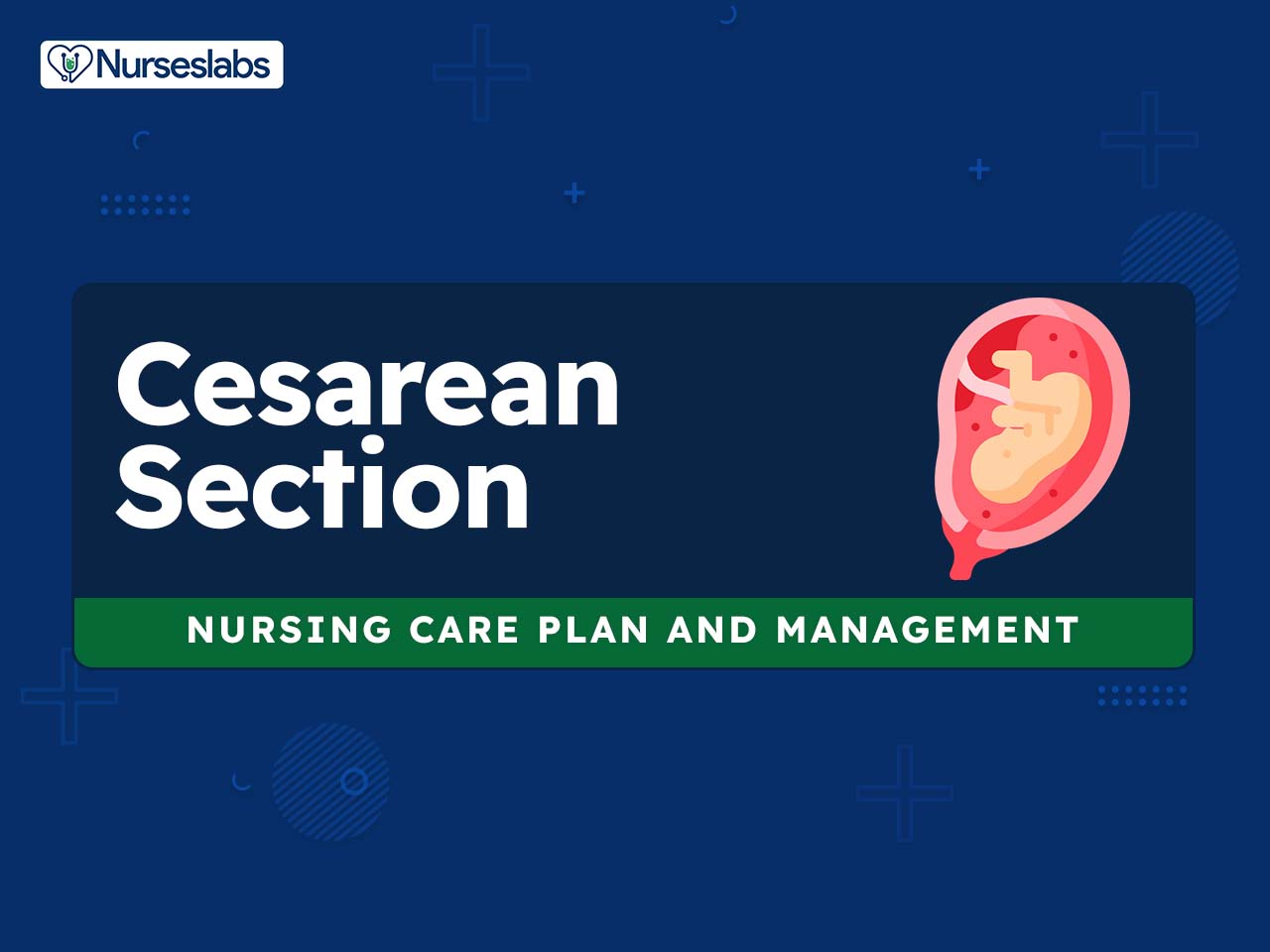
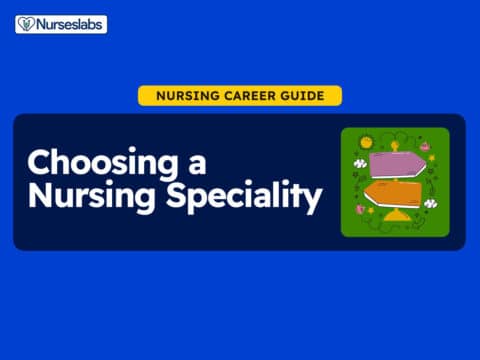
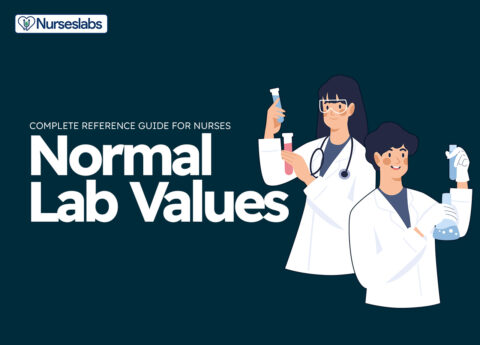
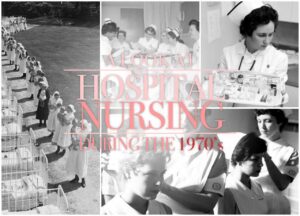

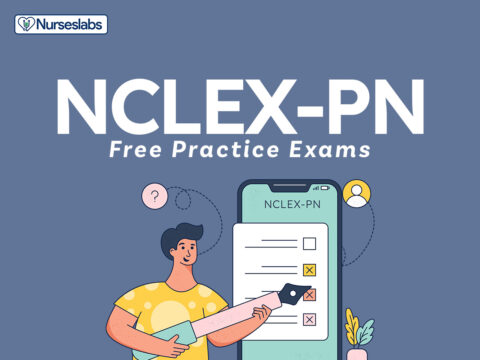



















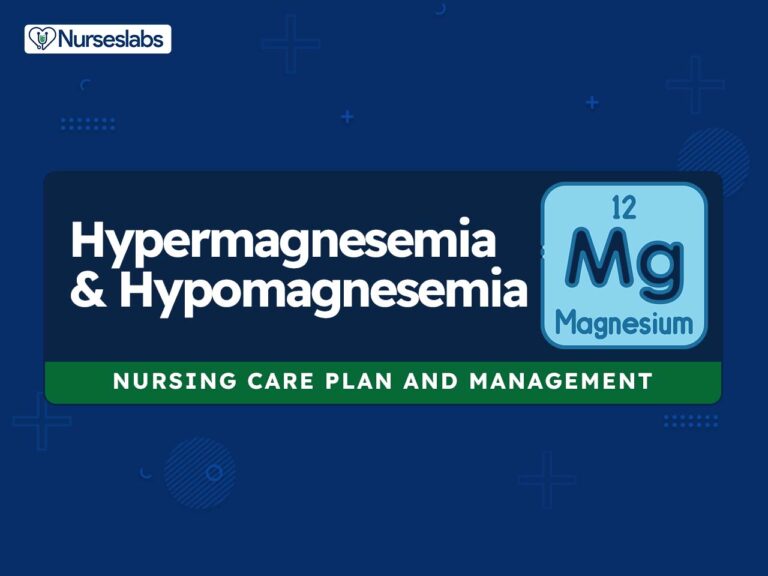

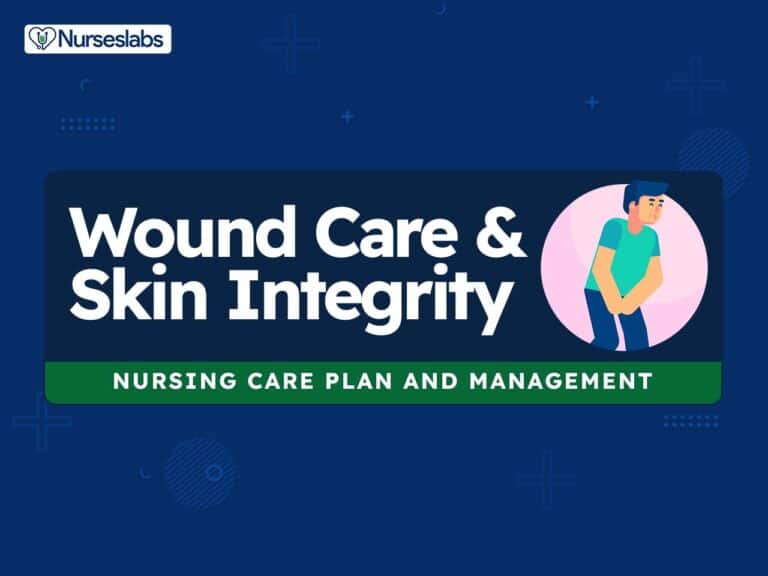
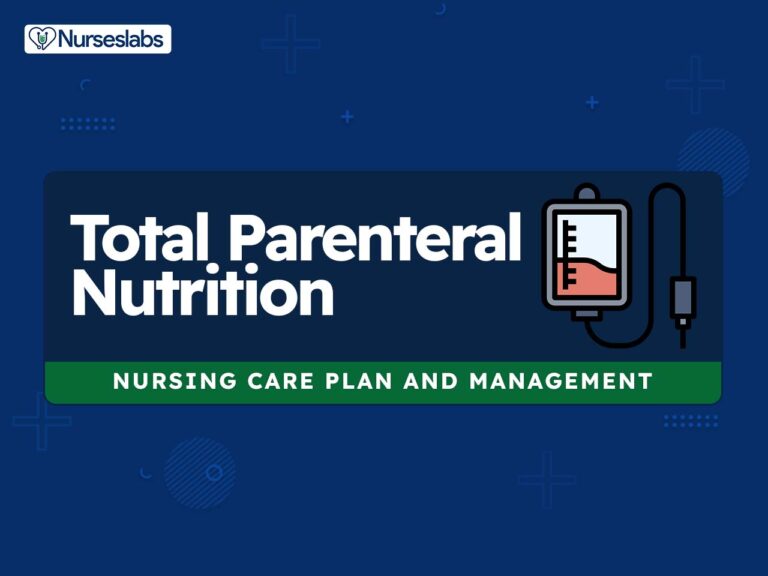

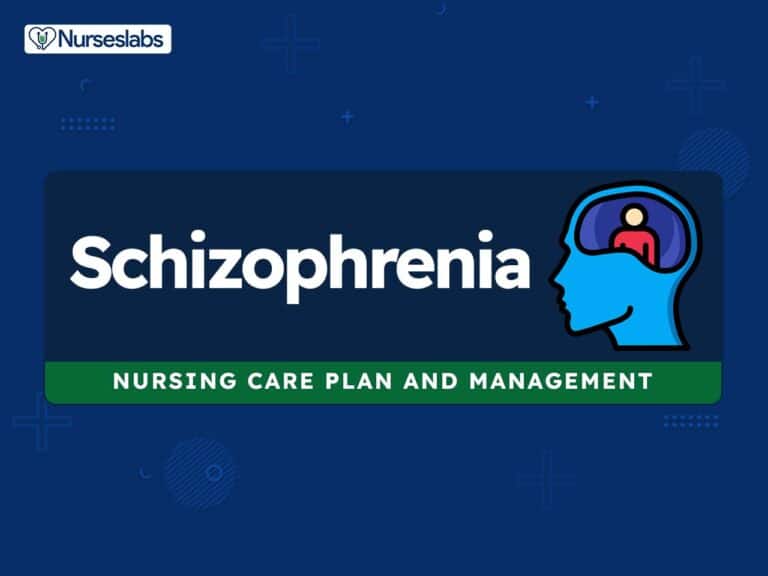

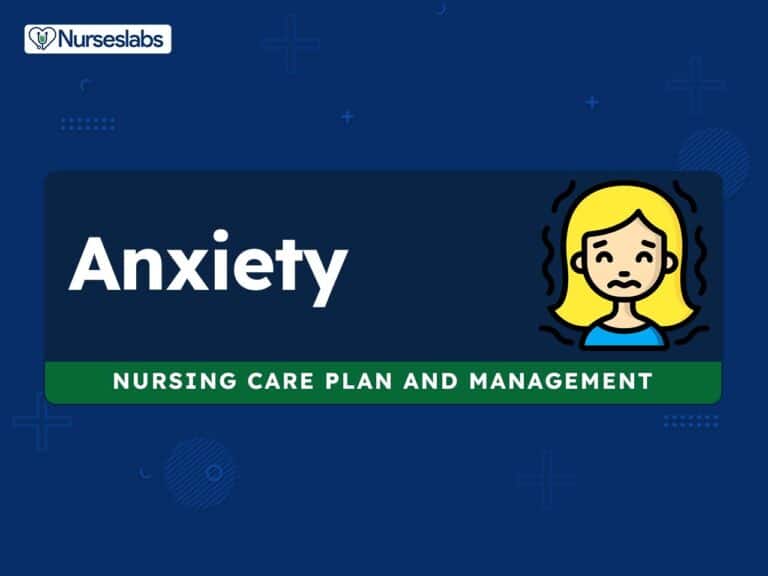
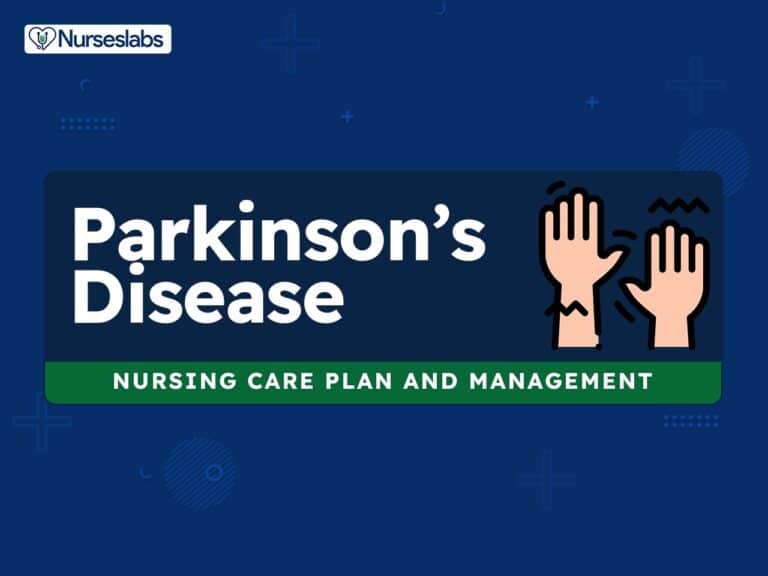
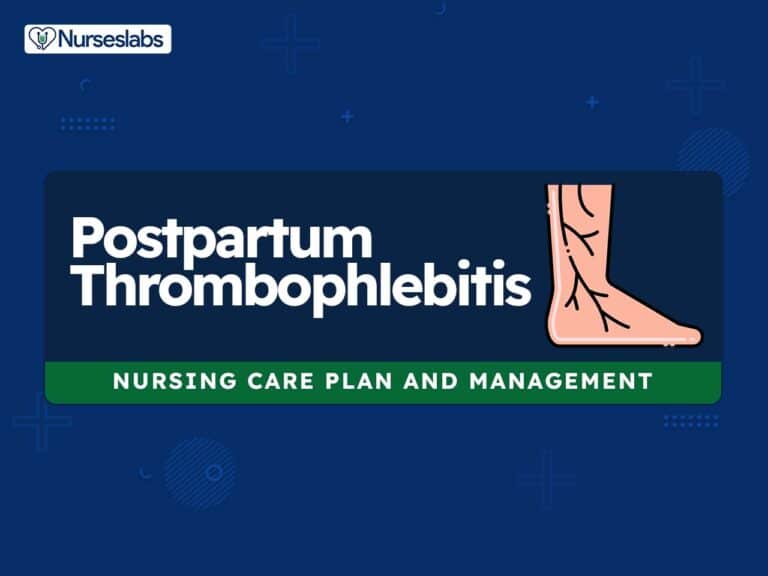
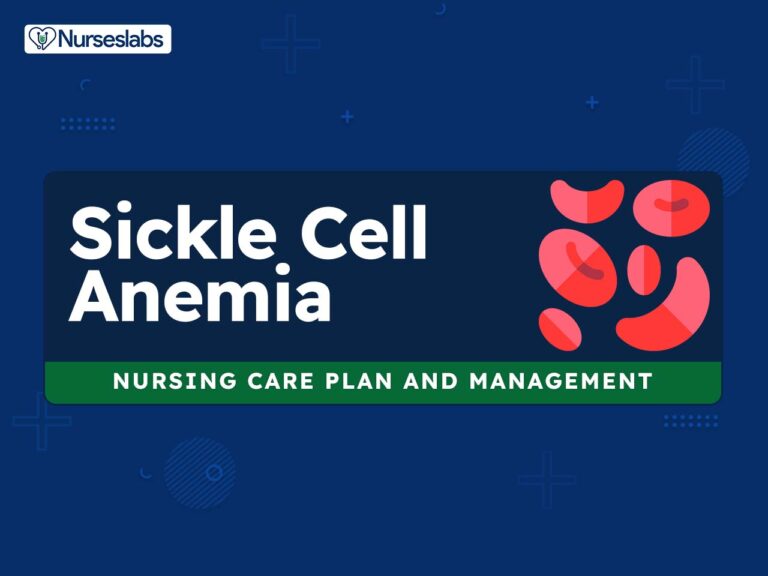
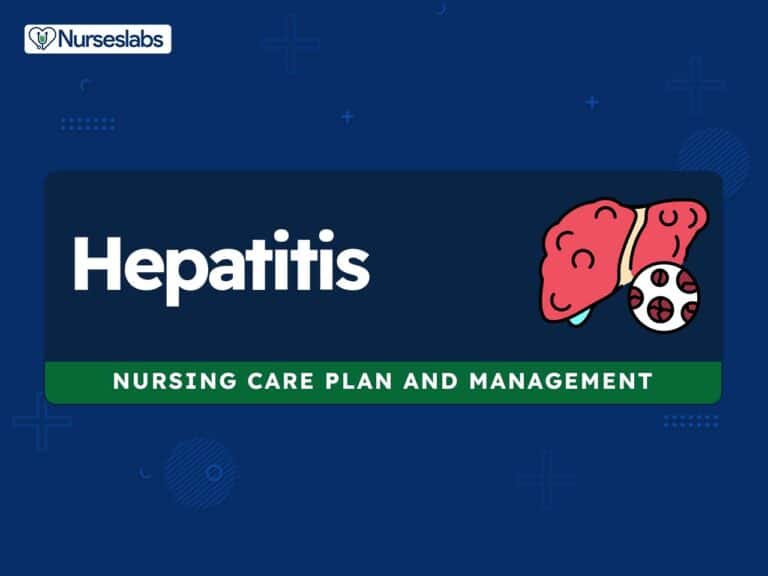
Leave a Comment